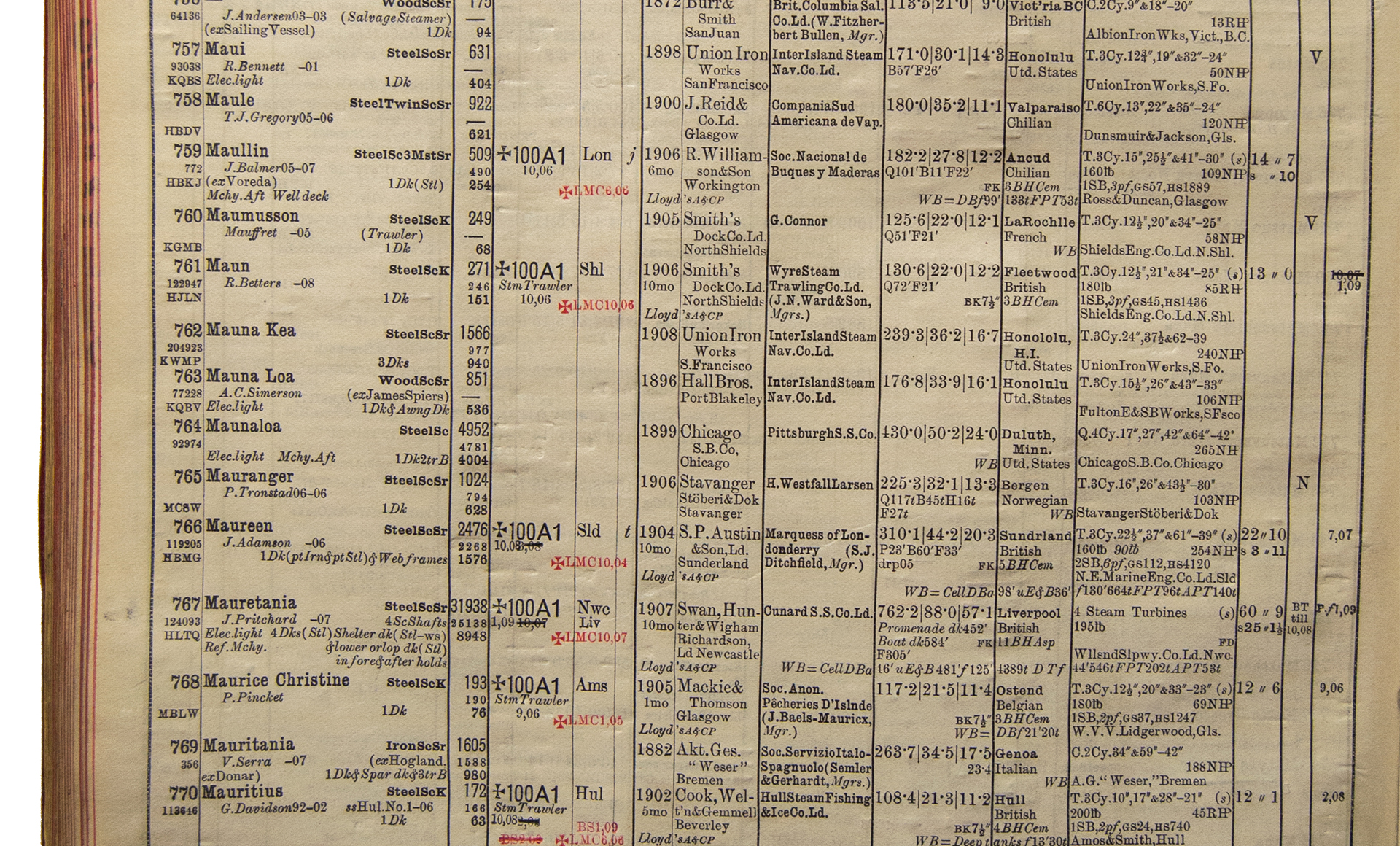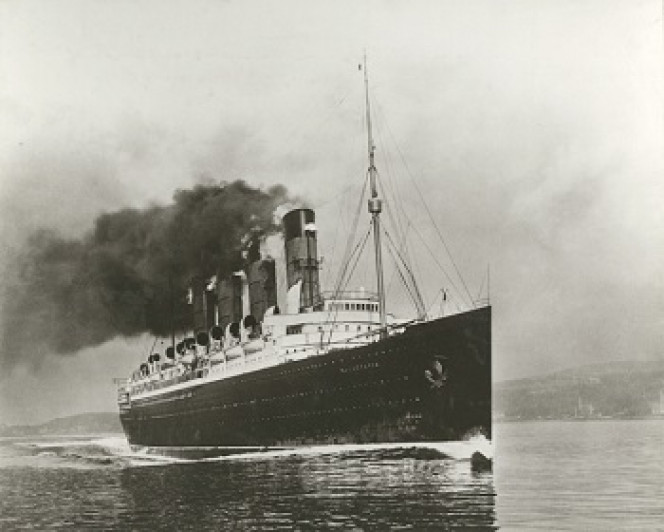A complete list of abbreviations can be downloaded here.
Throughout the last decades of the 19th Century, the steady decline of iron as a shipbuilding material in favour of steel was evident. Steam propulsion kept developing, becoming increasingly powerful and sophisticated. It was the golden age of ocean liners, which beat record after record, allowing transatlantic crossings from the UK to the northeastern US to be as short as seven days.
By the 1910s, the first Diesel engines were trialled at sea, with convincing results that stirred investments towards the introduction of motor vessels. Developments in refrigeration technology meant that perishable food cargo, such as meat and fish, could now be shipped from one continent to another. These changes contributed to refinements and additions to the information contained in the Register Books. The new editions consisted of two volumes, one for the sailing vessels, thinning year by year, and one for the steamers.
Despite the establishment of several rival classification societies, Lloyd's Register still classed nearly half of the global merchant fleet in 1914. During wartime, the UK authorities restricted the overseas circulation of the Register Books. However, copies reached the German Imperial Fleet and were used to target British ships during U-boat campaigns.
During the Second World War, the Register Books were brought under the Official Secrets Act and stamped 'Secret' between 1942 and 1945. The Admiralty gave Lloyd's Register the responsibility for maintaining records of lost ships, including dates and circumstances and invigilated the publishing and purchase of the Register Books.
The page shown above has been taken from the 1908/09 edition of Lloyd's Register of Ships. The ocean liner Mauretania is one of the ships listed. Discover more details on her, including surveys and plans, following the links below:







